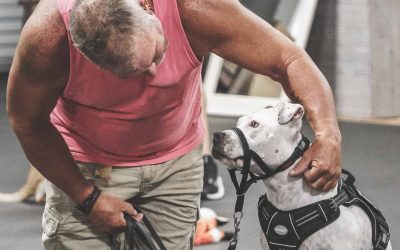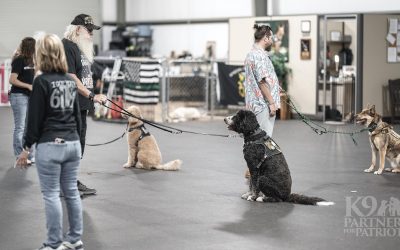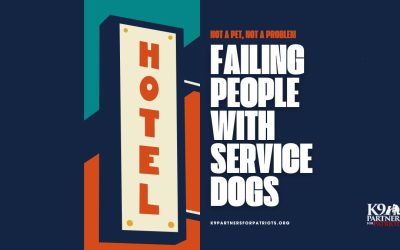How can you tell if it’s a service dog? And why does it matter?
Have you ever come across a person with a service dog in a cafe or supermarket? And thought, “I wish I could take my dog everywhere with me. I’ll bet that’s fun. Maybe I’ll slap a service dog vest on my pupper and do just that. No one will be the wiser and we’ll have the best time.”
Stop right there. Know this: True service dogs are not there for treats and giggles. They are highly trained working dogs performing an important service. There are even laws protecting their working partnership. Wherever any disabled person is legally permitted to go, their service dog is legally permitted as well. Because they must be together, as a unit, for the dog to do his work. Furthermore, it is a jailable offense to fake a service dog in the state of Florida.
There’s only ONE reason you would have a true service dog: you have a disability (which is not typically something you’d wish for). That stipulation is required by Federal law and the Americans with Disabilities Act (ADA). Your disability might not be obvious at first glance. It could be Post Traumatic Stress Disorder (PTSD), epilepsy, blindness, or another disabling condition. For the purposes of this article, it’s military service-related – which means PTSD, Traumatic Brain Injury (TBI), or Military Sexual Trauma (MST). Regardless of what it looks like, it makes it necessary for you to have the daily attention and support of a service dog so you can live independently and perform daily tasks. This means your dog works for you. Naturally, you love your dog, but he’s more than a beloved buddy. You rely on him. And when he’s on the job, he is at your side, at attention, focused on YOU, “four paws on the floor,” sensitive to any changes in your adrenaline levels. Because he is on the job, he must not be interfered with. No pettings or treats from others, no photo ops, no Frisbees. He is performing a service and his attention must remain on you, his handler.
So many people don’t understand the nature of the veteran-service dog relationship. Animal lovers see a dog and melt. “Pupper! Who’s a good boy?” They want to pet him, or go ahead and pet him without asking. Or worse, you tell them he’s on the job and the reason why they can’t pet him, and they say, “You don’t look disabled to me.” Yes; people really have said that. And it’s not only breathtakingly rude, it can ignite a confrontation that would never have happened had they stayed quiet. A confrontation that could get ugly fast. Explains K9 Partners for Patriots founder, Mary Peter, “One of our goals here is to educate the public. This dog is more than a dog. According to the ADA, the service dog is a piece of medical equipment, and wherever his person is allowed, this dog is allowed as well. Would you separate a person from his oxygen tank just because it’s more convenient for you? Of course not. Same principle.”
There’s only one reason to need a service dog, and there’s only one way to tell it’s an actual service dog. Not by an official-looking vest or special tag or certification. By his behavior. A true service dog will be quiet, focused on his handler, not easily distracted, and either standing or sitting next to his person. Thousands of hours of training (of the dog with the owner) are required to make this behavior second nature. If you see a dog in a purse or backpack, or a shopping cart, or a dog that’s aggressive or disruptive and getting into everything, you are not seeing a service dog. If his owner claims he’s a service dog, that owner is either dishonest or misinformed, and the dog’s behavior is proof of that.
More importantly, physical and mental harm can result from encounters between true service dogs and fake service dogs. Mary explains, “We have had a few of our veterans’ trained (and graduated) service dogs attacked by so-called “service dogs” wearing some sort of vest. Not only were they physically hurt, but mentally traumatized – and unable to work as a service dog anymore. After months and months of training and the bonding of the veteran and their battle buddy, their hopes are shattered. Their dog now becomes the family pet, but can’t go out and help the veteran navigate social situations … or any other situation anymore.
“The veteran now has to decide whether he can handle going through another six months of rigorous service dog training with a new dog, if they can handle adding another dog in the household, and how that will impact him and his family … as well as the other dog.”
Obviously, there are severe personal and legal consequences for faking a service dog. To learn more about true service dogs for military veterans, the good they do, and the exhaustive process of matching them to a vet and training them to be of service, visit K9PartnersForPatriots.com.
Article reposted with permission from Tampa Bay Times.





